Mixing Fluid Acrylic
21 April 2017 / New Artwork . Workshops
Today I had no other planned commitments so I decided that this is the day I will experiment with pouring dirty mixes of Acrylic. First thing I needed for this was a level table top. As my work table has a slight lean, the acrylic often ran off to one side and I had to turn the canvas constantly to avoid the runoff.
So an IKEA table top I found a couple of weeks ago at the kerbside collection was just the thing I needed. It is about 80cm by 60cm in dimensions and about 3 cm thick so would not warp.
I screwed one small round head screw into every corner of the flat top as 4 legs which I could adjust by screwing in each screw as needed and leveled the IKEA top on top of my worktable that way.
The first piece I poured was just on a small leftover piece of hard board. I started with preparing the paint by mixing it with Floetrol (available at Bunnings) as a painting medium, a bit of water and by adding a couple of drops of Silicone. I mixed white, green, blue and pink and just dripped the paint across the short side of the board. Then I dragged the paint from top t bottom with a small plastic cut off I used as a scraper.
And this was the result:
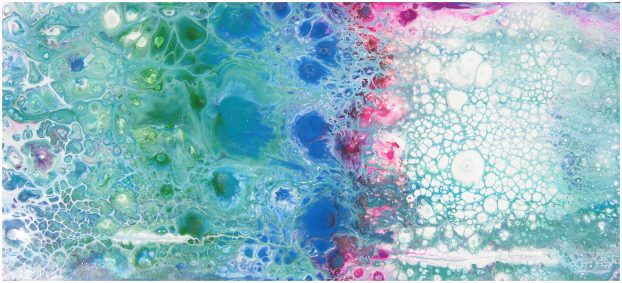
The second piece I did was a larger piece of hardboard, about A4 size. This time I added a bit of golden Acrylic but left the pink Acrylic off. Disappointingly the Gold only looks like yellow and not like gold at all. But the overall effect is not too bad.
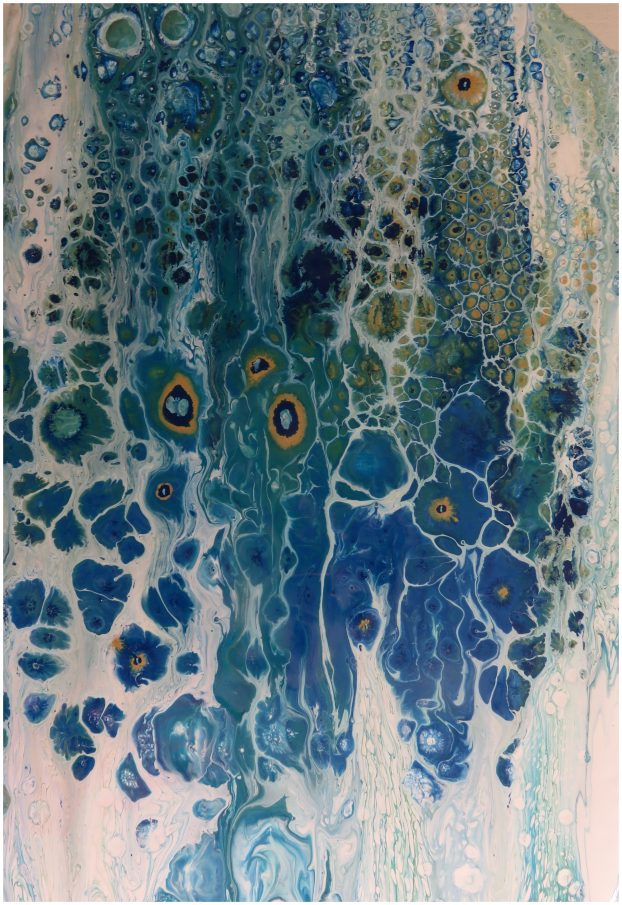
As a lot of acrylic paint was dripping of the board when I used the scraper to drag it through the paint, I collected this run off paint on a third smaller left over board I had from a previous pouring test
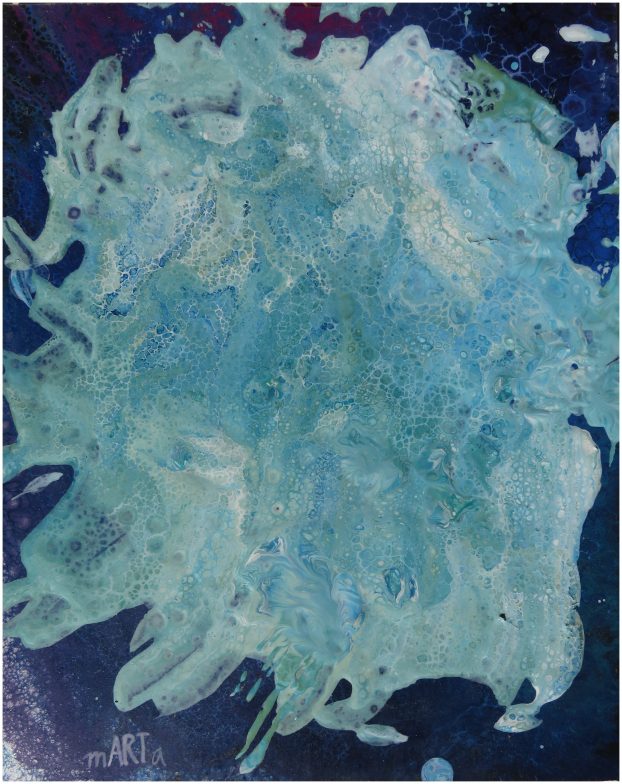
As this runoff paint was thoroughly mixed I was surprised that it still formed cells, but only very small and delicate ones.
Then I decided that I will try and see what happens when I pour acrylic on thick cardboard paper. As some of the hardboards I used for the trial are very thick and I can’t use the results in a pre purchased frame. If it would work on cardboard it would be easy to frame.
When I first poured the mix on cardboard I was surprised how good it worked, but then the card board started to welt and buckle and the paint collected in the deeper spots of the board which didn’t look the way I had planned it.
But after drying and cropping the paper I actually got a usably result and it will be easy to frame.
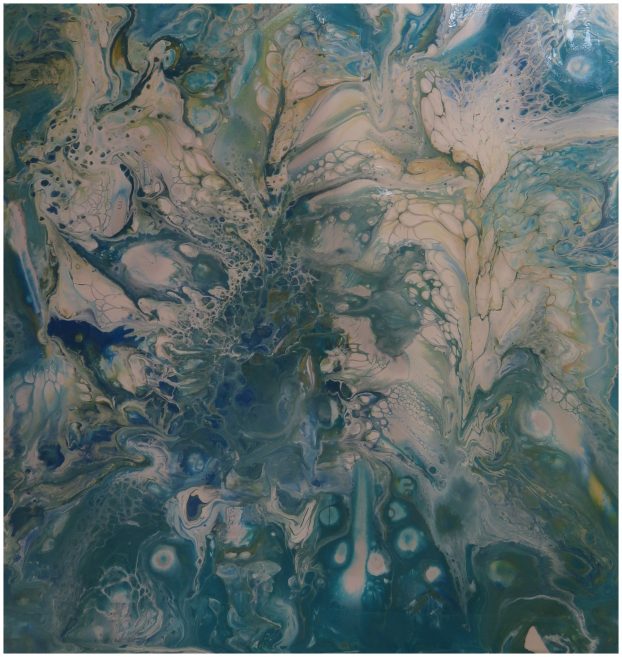
So altogether it was a pretty useful experiment i did today. I still will experiment with different papers, like watercolour paper or even photo paper to see which one is the best paper for pouring.




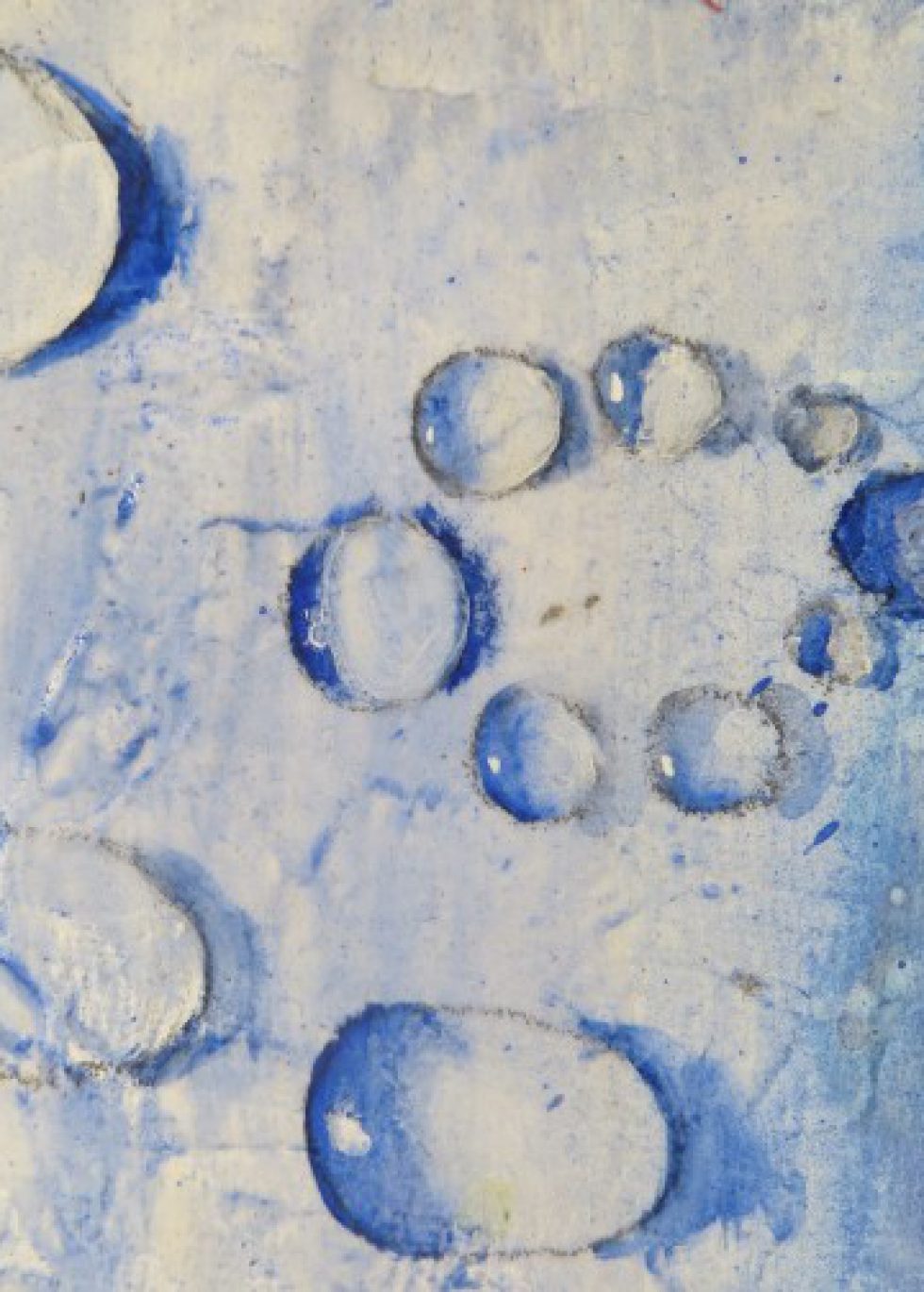

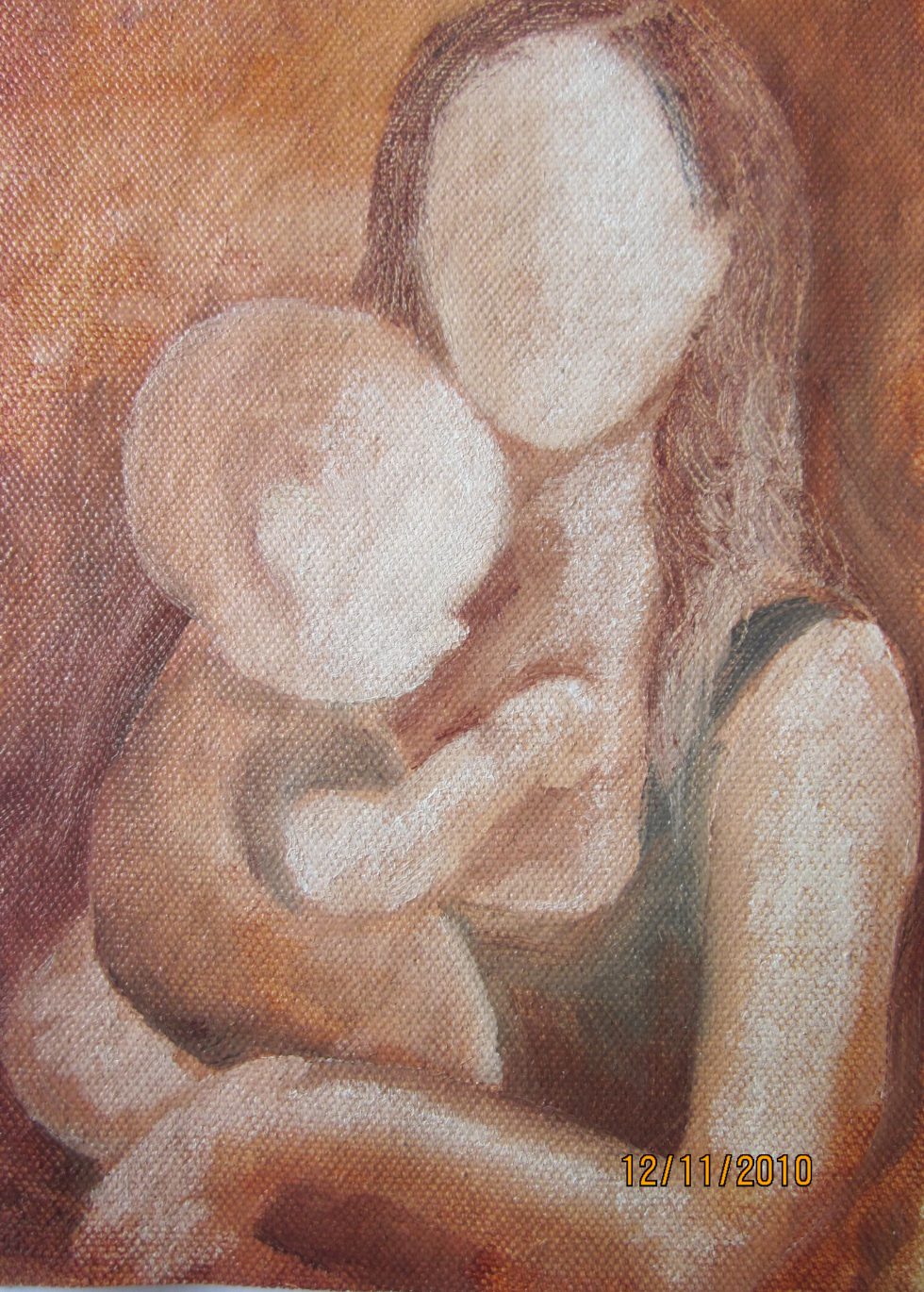
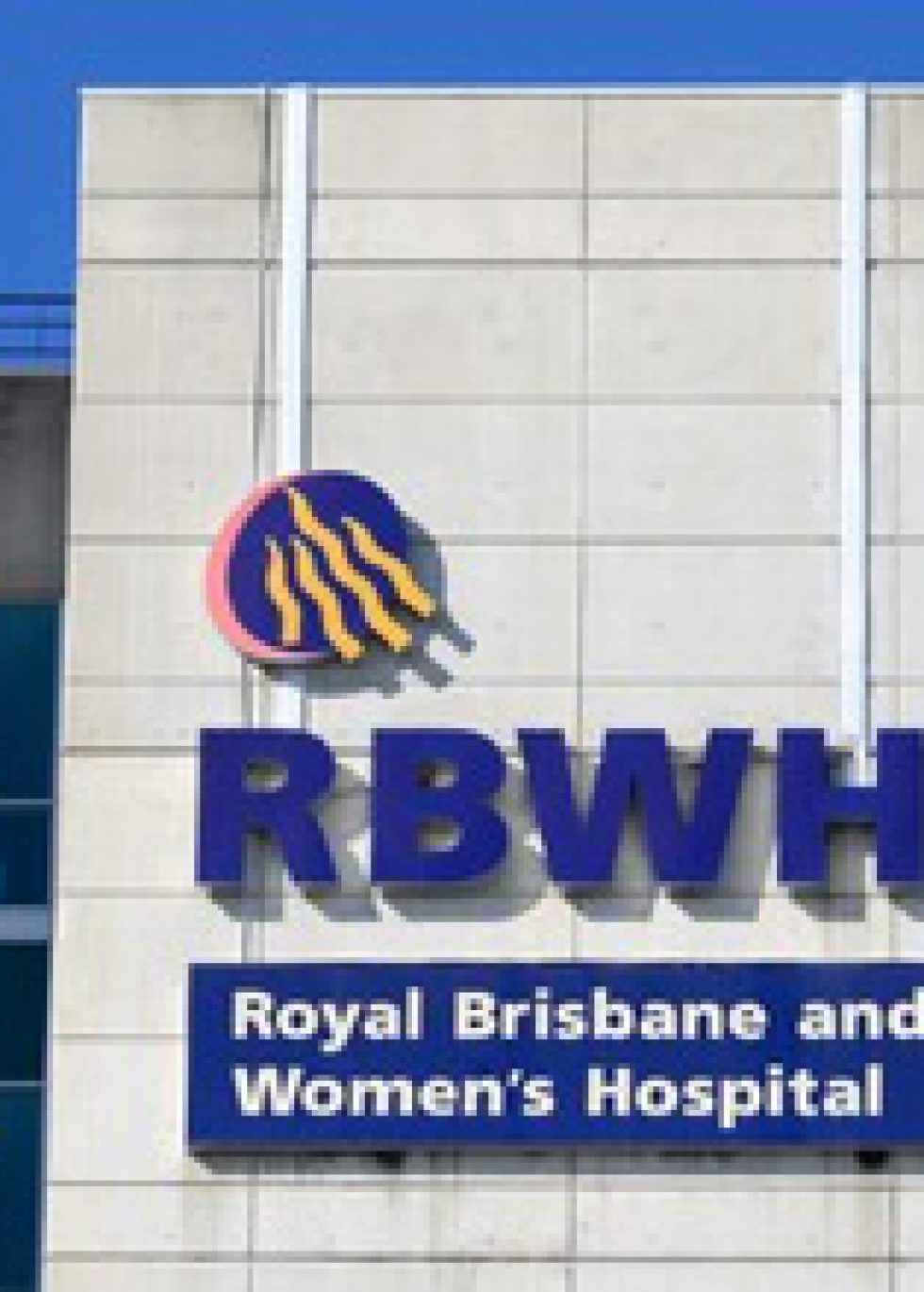
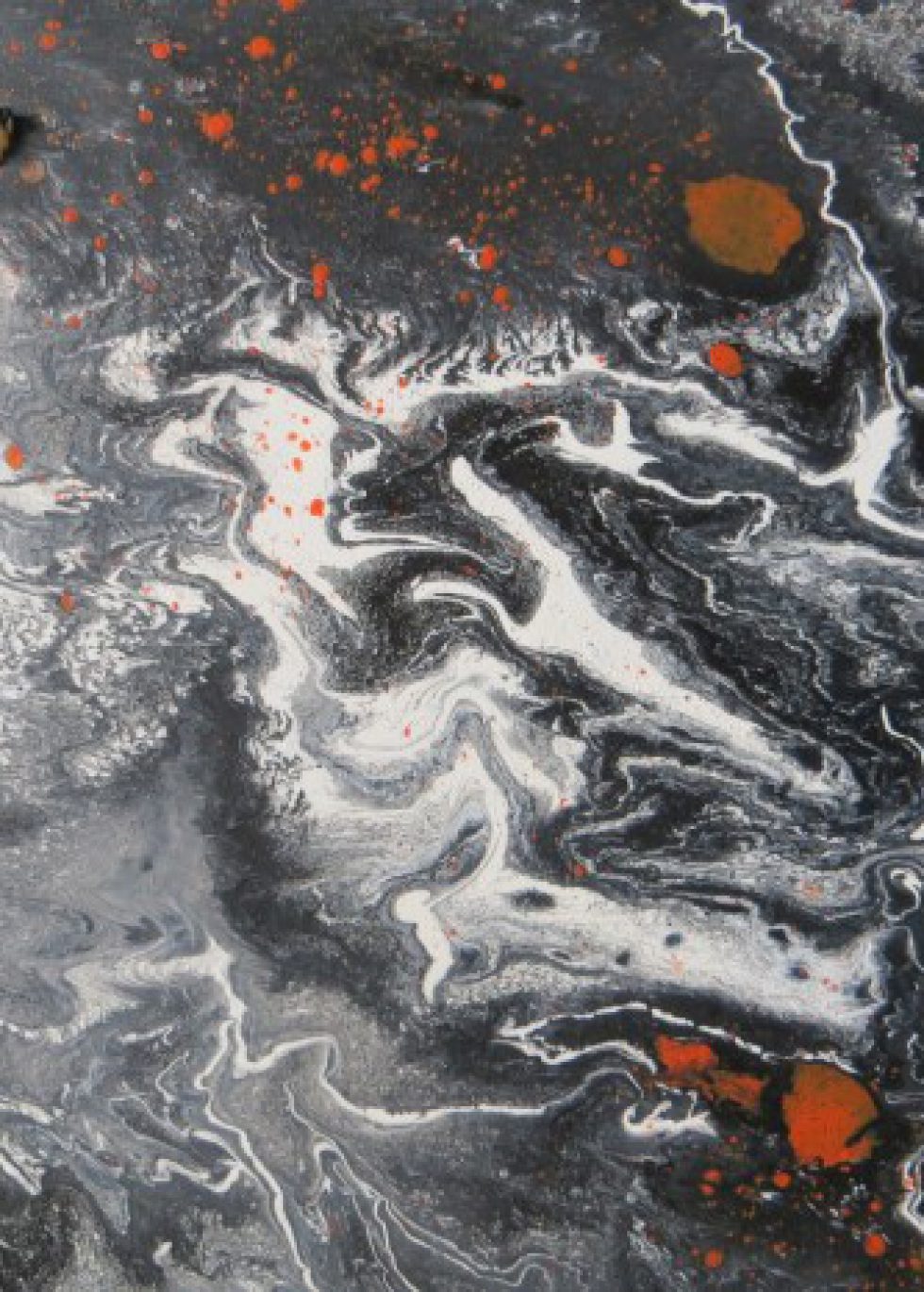
Leave a comment
Your email address will not be published. Required fields are marked*